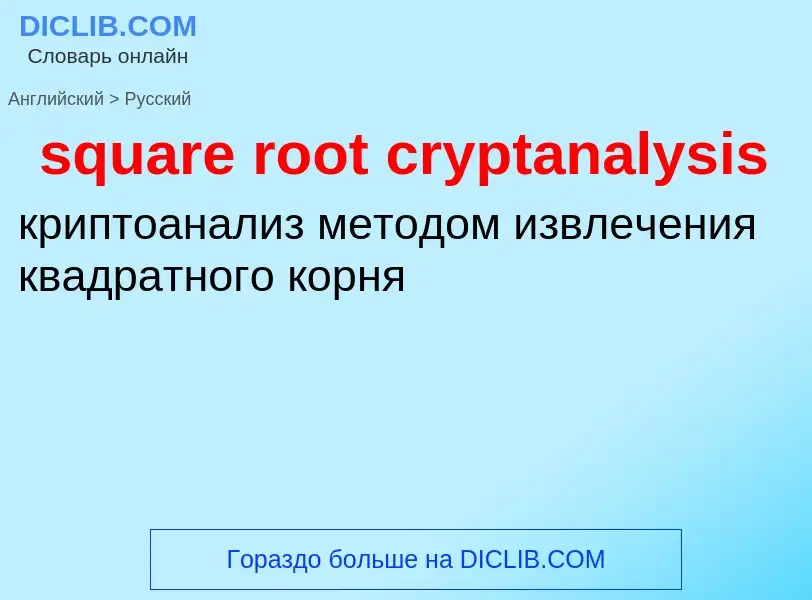Vertaling en analyse van woorden door kunstmatige intelligentie ChatGPT
Op deze pagina kunt u een gedetailleerde analyse krijgen van een woord of zin, geproduceerd met behulp van de beste kunstmatige intelligentietechnologie tot nu toe:
- hoe het woord wordt gebruikt
- gebruiksfrequentie
- het wordt vaker gebruikt in mondelinge of schriftelijke toespraken
- opties voor woordvertaling
- Gebruiksvoorbeelden (meerdere zinnen met vertaling)
- etymologie
square root cryptanalysis - vertaling naar russisch
общая лексика
квадратный корень
существительное
математика
квадратный корень
Definitie

Wikipedia
The Penrose method (or square-root method) is a method devised in 1946 by Professor Lionel Penrose for allocating the voting weights of delegations (possibly a single representative) in decision-making bodies proportional to the square root of the population represented by this delegation. This is justified by the fact that, due to the square root law of Penrose, the a priori voting power (as defined by the Penrose–Banzhaf index) of a member of a voting body is inversely proportional to the square root of its size. Under certain conditions, this allocation achieves equal voting powers for all people represented, independent of the size of their constituency. Proportional allocation would result in excessive voting powers for the electorates of larger constituencies.
A precondition for the appropriateness of the method is en bloc voting of the delegations in the decision-making body: a delegation cannot split its votes; rather, each delegation has just a single vote to which weights are applied proportional to the square root of the population they represent. Another precondition is that the opinions of the people represented are statistically independent. The representativity of each delegation results from statistical fluctuations within the country, and then, according to Penrose, "small electorate are likely to obtain more representative governments than large electorates." A mathematical formulation of this idea results in the square root rule.
The Penrose method is not currently being used for any notable decision-making body, but it has been proposed for apportioning representation in a United Nations Parliamentary Assembly, and for voting in the Council of the European Union.

![Constructing]] the length <math>x=\sqrt{a}</math>, given the <math>a</math> and the unit length Constructing]] the length <math>x=\sqrt{a}</math>, given the <math>a</math> and the unit length](https://commons.wikimedia.org/wiki/Special:FilePath/SqrtGeom.gif?width=200)

